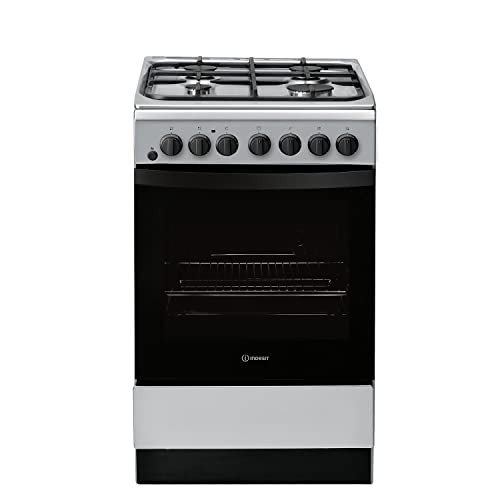Is Fan Oven Sale The Greatest Thing There Ever Was?
Understanding Kitchen Ovens and Hobs: A Comprehensive Guide
The kitchen is often described as the heart of the home, and for excellent factor. It is where families come together, meals are prepared, and memories are created. Central to this culinary sanctuary are 2 vital appliances: the kitchen oven and the hob. Comprehending their functions, types, and performances is essential for effective cooking and can substantially boost a home chef's experience. This short article will look into the world of kitchen ovens and hobs, analyzing their various types, benefits, and tips for making informed choices.
Tabulation
- Introduction to Kitchen Ovens
- Types of Ovens
- Traditional Ovens
- Convection Ovens
- Microwave Ovens
- Steam Ovens
- Comprehending Hobs
- Kinds of Hobs
- Gas Hobs
- Electric Hobs
- Induction Hobs
- Advantages of Using Ovens and Hobs
- Selecting the Right Oven and Hob for Your Kitchen
- Upkeep Tips for Ovens and Hobs
- FAQs
- Conclusion
1. Introduction to Kitchen Ovens
Ovens are indispensable home appliances in modern kitchens. They offer a controlled environment for baking, roasting, and broiling food. With different designs and functionalities, choosing the right oven can drastically affect cooking times, food texture, and taste.
2. Kinds of Ovens
Conventional Ovens
Conventional ovens are the most typical type found in homes. They use either electric or gas power to heat up the interior and usually include a single cooking space.
Advantages:
- Versatile for baking, roasting, and broiling.
- Generally cost effective.
Convection Ovens
Convection ovens are comparable to conventional ovens but come equipped with a fan that distributes hot air throughout the cooking chamber. This leads to even cooking and browning.
Advantages:
- Reduced cooking times due to enhanced air flow.
- Boosted browning and crisping of foods.
Microwave Ovens
Microwave ovens utilize electromagnetic radiation to heat food quickly, making them convenient for thawing and reheating leftovers.
Benefits:
- Very quickly cooking times.
- Energy efficient.
Steam Ovens
Steam ovens use steam to cook, preserving the wetness and nutrients in food. They are particularly popular among health-conscious cooks.
Benefits:
- Healthier cooking alternative.
- Keeps minerals and vitamins in food.
3. Comprehending Hobs
Hobs, also referred to as cooktops, are the flat surface areas on which pots and pans are put to prepare food. They can be integrated into kitchen countertops and are offered in different designs, fuel types, and designs.
4. Kinds of Hobs
Gas Hobs
Gas hobs utilize burner as their heat source, using instant heat and precise temperature level control.
Benefits:
- Excellent control over cooking heat.
- Generally more affordable to run than electric ones.
Electric Hobs
Electric hobs heat using electric coils or glass surface areas. They might take longer to warm up than gas, however they provide a smooth cooking surface and are simpler to clean.
Advantages:
- Even heat circulation.
- Safe, as there's no open flame.
Induction Hobs
Induction hobs use electro-magnetic energy to directly heat pots and pans. They require compatible cookware and deal instant responsiveness.
Benefits:
- Highly energy-efficient.
- Faster cooking times and accurate temperature level control.
5. Advantages of Using Ovens and Hobs
Both ovens and hobs come with their own distinct set of benefits that can boost any cooking experience. Here are a couple of crucial benefits:
- Diverse Cooking Options: Both devices permit a variety of cooking methods including boiling, frying, roasting, baking, and steaming.
- Time Efficiency: Modern ovens and hobs typically include fast cooking settings, which conserve time in the kitchen.
- Precision Cooking: With sophisticated features, users can achieve better results in temperature level control and cooking times.
6. Choosing the Right Oven and Hob for Your Kitchen
When picking the right oven and hob, numerous factors ought to be thought about:
- Size: Ensure that the device fits comfortably in your kitchen space.
- Cooking Style: Consider what types of food you frequently prepare.
- Fuel Type: Whether gas or electric, consider accessibility and efficiency in your location.
- Spending plan: Determine your spending plan and find devices that satisfy your needs within that variety.
Checklist for Choosing Your Oven and Hob:
- Assess kitchen space.
- Identify your cooking choices.
- Determine source of power accessibility.
- Compare features and specs.
- Set a budget variety.
7. Upkeep Tips for Ovens and Hobs
Routine maintenance is important for keeping ovens and hobs in optimum condition. Here are some maintenance pointers:
- Clean Regularly: Wipe down surfaces after each use and deep clean occasionally.
- Check Seals: For ovens, check door seals to ensure they are airtight.
- Analyze Burners: For gas hobs, keep burners devoid of food debris to preserve effective heating.
- Replace Filters: If your oven has a filter, change it as advised by the maker.
8. Frequently asked questions
1. What is Buy Oven Online in between a conventional oven and a convection oven?Conventional ovens
cook food through convected heat, while stove circulate hot air, leading to much faster and more even cooking. 2. Do induction hobs require special cookware?Yes,
induction hobs need ferrous cookware that is capable of being magnetized to work successfully. 3. Are steam ovens worth the investment?For health-conscious individuals or those who frequently cook vegetables and delicate foods, steam ovens can be worth the investment
due to their capability to maintain nutrients. 4. Can I integrate an oven and hob into one unit?Yes, lots of producers use combined systems called range cookers, which incorporate both an oven
and hob into a single home appliance. 9. Conclusion Kitchen ovens and hobs are essential elements of any culinary space, each offering distinct features and functionalities fit for different cooking styles.
By understanding the
types of ovens and hobs available, their benefits, and how to maintain them, home chefs can cultivate a more efficient and satisfying cooking experience. Whether one is an experienced cook or a newbie, making informed decisions about these vital kitchen appliances is vital. 